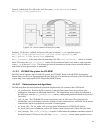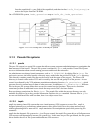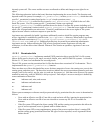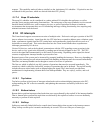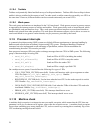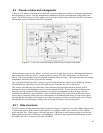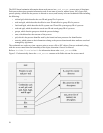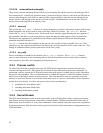file by adding ACLs with the setfacl command. For example, the following command allows a user
named john read access to this file, even if john does not belong to the root group.
#setfacl –m user:john:4,mask::4 /aclfile
The ACL on file will look like:
# owner: root
# group: root
user:: rw-
user:john:r—
group::r--
mask::r--
other::---
The mask field reflects the maximum permission that a user can get. Hence, as per the ACL, even though
john is not part of the root group, john is allowed read access to the file /aclfile.
5.1.6 Asynchronous I/O
Asynchronous I/O (AIO) enables even a single application thread to overlap I/O operations with other
processing, by providing an interface for submitting one or more I/O requests in one system call
(io_submit()) without waiting for completion, and a separate interface (io_getevents()) to reap
completed I/O operations associated with a given completion group.
General operation of asynchronous I/O proceeds as follows:
• Process sets up asynchronous I/O context, for files opened with O_DIRECT, using io_setup
system call.
• Process uses io_submit system call to submit a set of I/O operations.
• Process checks the completion of I/O operations using io_getevents.
• Process destroys the asynchronous I/O context using the io_destroy system call.
AIO uses the kernel bottom half mechanism of work queues to perform deferred work of AIO. io_setup
sets up a work queue named aio, to which AIO work is submitted.
Some of the capabilities and features provided by AIO are:
• The ability to submit multiple I/O requests with a single system call.
• The ability to submit an I/O request without waiting for its completion and to overlap the request with
other processing.
• Optimization of disk activity by the kernel through combining or reordering the individual requests of
a batched I/O variety.
• Better CPU utilization and system throughput by eliminating extra threads and reducing context
switches.
5.1.7 I/O scheduler
The I/O scheduler in Linux forms the interface between the generic block layer and the low-level device
drivers. The block layer provides functions that are utilized by the file systems and the virtual memory
manager to submit I/O requests to block devices. These requests are transformed by the I/O scheduler and
made available to the low-level device drivers. The device drivers consume the transformed requests and
forward them, by using device-specific protocols, to the actual device controllers that perform the I/O
operations. As prioritized resource management seeks to regulate the use of a disk subsystem by an
51



